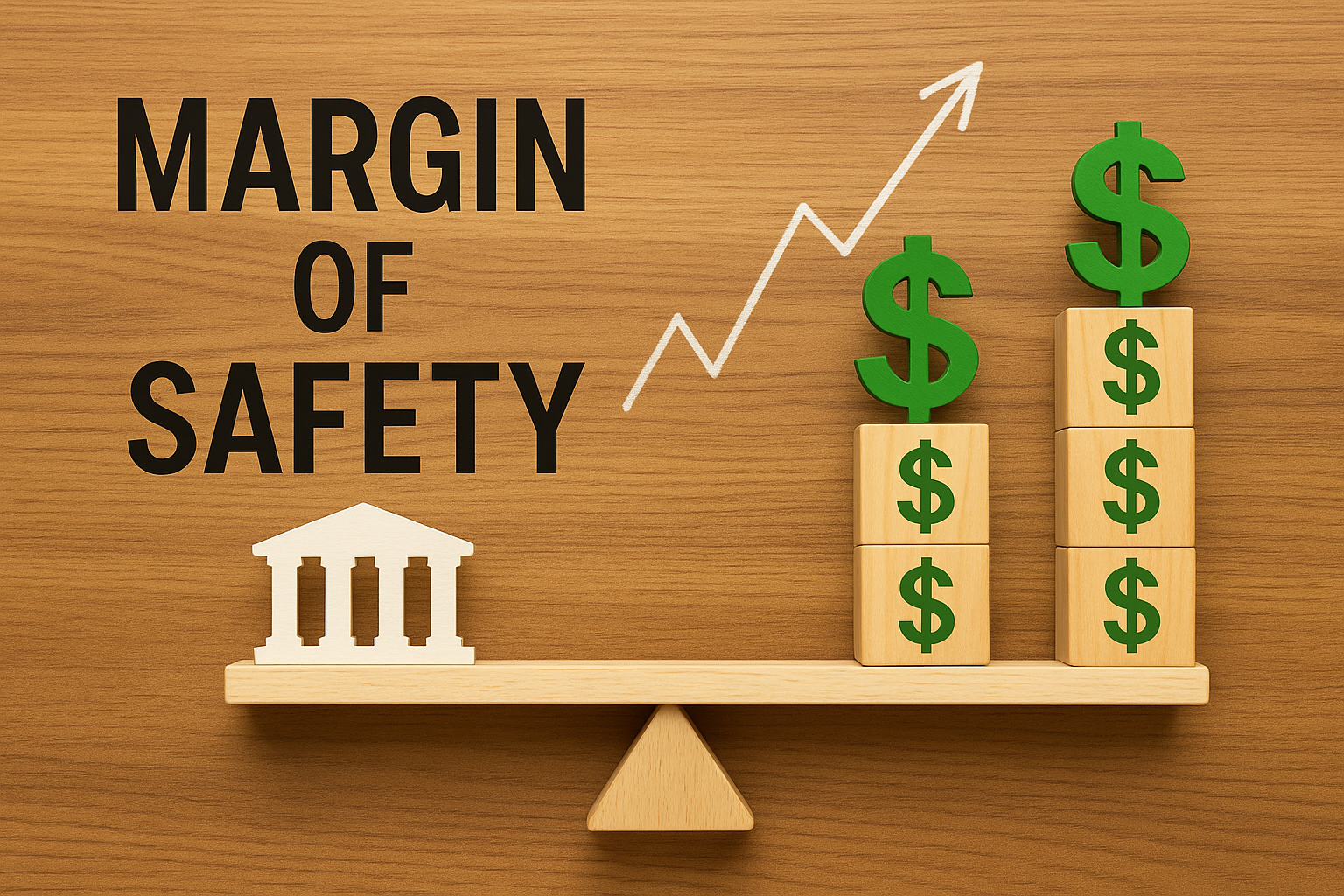Your cart is currently empty!

How Margin of Safety Separates Investors from Speculators
Posted by:
|
On:
|
The difference between being labeled an investor or a speculator often comes down to one principle: margin of safety.
According to Benjamin Graham in The Intelligent Investor, an investor is someone who conducts operations based on thorough analysis, with a goal of preserving capital and earning an adequate return. By contrast, a speculator typically ignores the underlying business and bases decisions more on emotion, hype, or momentum than on fundamentals.
The term speculator has become more blurred over time—especially in today’s market. Many self-proclaimed investors are actually speculating on trends, trying to guess which AI stock will dominate the future rather than studying the businesses as they stand today. By Graham’s standards, the difference between sound investing and speculation often hinges on whether there is a sufficient margin of safety.
Price Determines Risk
The price you pay for a stock usually determines whether the investment is sound or speculative. At a low enough price, a stock might be a bargain. As the price rises, the risk rises with it—until eventually, the stock becomes speculative.
To assess whether we’re paying a fair price, we must first estimate intrinsic value—what we believe the business is actually worth. In Graham’s era, value investors often used asset-based valuations. For instance, if a company’s assets were worth $80 million and you could buy it for $40 million, you had a 50% margin of safety.
Today, many companies are asset-light, so we often rely on free cash flow and use methods like discounted cash flow (DCF) analysis. This approach involves projecting a company’s future cash flows and discounting them back to the present. Of course, this method has a speculative element—none of us can predict the future perfectly.
What to Look for in a Business
When evaluating a company, we look for:
- Strong financials, including low debt and high liquidity.
- Consistent revenue and earnings, with low volatility.
- Efficient use of capital, as shown by good returns on equity (ROE), assets (ROA), and invested capital (ROIC).
If a company meets these criteria and is trading at a price that gives us a margin of safety, it may be worth considering as an investment.
Great Businesses Can Still Be Bad Investments
Even the best businesses can produce poor returns if bought at the wrong price. Take Apple, for example. It’s a fantastic company that Warren Buffett has invested in through Berkshire Hathaway. But if you overpay, your return could be disappointing despite the company’s performance.
As Buffett famously said, “It’s far better to buy a wonderful company at a fair price than a fair company at a wonderful price.”
But that cuts both ways—you also don’t want to buy a company just because it looks cheap.
Beware the Value Trap
Sometimes a stock looks cheap on paper: a P/E of 11, P/S of 0.9, P/B of 1, low debt-to-equity. On the surface, it looks like a value investor’s dream.
But dig deeper and the problems appear: declining revenue year-over-year, increasing debt just to pay the dividend. These are signs of a company in decline. Despite the attractive metrics, there’s no real margin of safety—because the business is deteriorating. It might not go bankrupt, but the prospects for meaningful returns are slim.
Conclusion
The margin of safety is what separates investors from speculators. It’s the cushion that allows for human error, unforeseen events, and future uncertainty. True investing requires discipline, analysis, and patience—qualities that help us avoid chasing hype and instead focus on buying businesses at prices that allow for long-term success.
Disclosure: As an Amazon Associate, I earn from qualifying purchases. The content provided in this blog is for informational and educational purposes only and does not constitute investment advice. Always perform your own research and consult with a licensed financial advisor before making any investment decisions. For our full disclosure go here to our privacy page.


Leave a Reply